Online course detail
Curriculum
Content designed by Microsoft Expert
The Deep Learning Specialization is a basic program that will assist you with grasping the capacities, difficulties, and results of Deep learning and set you up to partake in the improvement of driving edge artificial intelligence innovation.
Key terms of this module
Course -1: TensorFlow for Deep Learning with MLOps
Course -2: Keras for Deep Learning with MLOps
Course -3: Deep learning Computer Vision - CNN, OpenCV, YOLO, SSD & GANs
- Environmental Setup using YAML
- Using Conda Packages
MLOps is an abbreviation that addresses the blend of Artificial Intelligence(ML) and Tasks. It is a delightful method for executing information science projects that permit organizations to expand their ventures' effectiveness and limit the gamble of presenting AI, artificial consciousness, and information science-related innovations.
Key terms of this module
- Numpy
- Pandas
- Data Visualization
- Scikit Learn
Python Intense Training is the world's top-rated Python language manual. This high-speed, exhaustive presentation will make them compose programs, take care of issues, and create working applications quickly.
Key terms of this module
- Introduction to Neural Network
- Neural Network Activation Functions
- RELU
- TANH
- Signoid
- Hyperbolic
- Cost Functions
- Gradient Descent Back propagation
- Tensorflow Playground (playground.tensorflow.org)
- Manually Creating Neural Network
- Manually creation of Neural Network – Operations
- Manually creation of Placeholders & variables
- Manually creation of Session
- Manual Neural Network – Classification point of View
Brain organizations, otherwise called counterfeit brain organizations (ANNs) or reenacted brain organizations (SNNs), are a subset of Artificial Intelligence and are at the core of Deep learning calculations. Their name and design are animated by the human cerebrum, emulating how natural neurons sign to each other.
Key terms of this module
- Introduction to tensor flow
- Tensorflow – graphs
- Tensorflow – Variables & Placeholders
- Neural Network using Tensorflow
- Regression using Tensorflow
- Classification using Tensorflow
- Saving & Restoring models using Tensorflow
TensorFlow is fundamentally a product library for mathematical calculation utilizing information stream charts where: hubs in the diagram address numerical tasks. Edges in the diagram address the multi-layered information exhibits (called tensors) conveyed between them.
Key terms of this module
- Introduction to CNN
- Manual Creation of CNN
- CNN Implementation using Tensorflow
- Cnn Project Solution using Tensorflow
(CNN) have been utilized in cutting-edge Computer vision undertakings like face discovery and self-driving vehicles. This module should investigate the ideas expected to figure out CNNs in TensorFlow. Later you will likewise jump into some TensorFlow CNN models.
Key terms of this module
- Introduction to RNN
- Manual creation of RNN
- Vanishing Gradients
- LSTM & RGRU
- Introduction to RNN with Tensorflow API
- RNN with Tensorflow
- RNN Plotting
- Time Series App using RNN
- Word2Vec using RNN
TensorFlow RNN, or rather RNN, represents a Repetitive Brain network. These brain networks are known for recalling the result of the past step and using it to contribute to the subsequent stage. In other brain organizations, the info and result of the secret layers are autonomous of one another.
Key terms of this module
- Deep Nets with TensorFlow Abstraction API
- Deep Nets with TensorFlow Abstraction API – Keras
- Deep Nets with TensorFlow Abstraction API – Layers
- Tensorboard
TensorFlow packages many Artificial Intelligence and Deep learning models and calculations (otherwise known as brain organizations) and makes them valuable via normal automatic illustrations. It utilizes Python or JavaScript to give a helpful front-end Programming interface for building applications while executing those applications in elite execution C++.
Key terms of this module
- Autoencoder Basics
- Dimensionality reduction with Linear AutoEncoder
- Linear Autoencoder PCA
- Stacked Autoencoder
An autoencoder is a unique brain network prepared to duplicate its contribution to its result. For instance, given a picture of a transcribed digit, an autoencoder first encodes the picture into a lower-layered dormant portrayal, then, at that point, disentangles the idle portrayal back to a picture. An autoencoder determines how to pack the information while limiting the recreation blunder.
Key terms of this module
- Introduction to Reinforcement Learning with OpenAI gym
- Introduction to OpenAI gym
- OpenAI Gym setup
- OpenAI gym Environment Basics
- OpenAI gym observations
- OpenAI gym Actions
- Simple Neural Network game
- Policy gradient theory Implementation & core base
This is the third in a progression of articles on Support Learning and Open AI Exercise Centers. Section 1 can be viewed here, while Section 2 can be viewed here. Support learning (RL) is the part of Artificial Intelligence that makes arrangements with gaining from associating with a climate where criticism might be deferred.
Key terms of this module
- Introduction to GANs
- GAN Implementation
- Face Aging GAN
A generative ill-disposed network, or GAN, is a Deep brain network system which can gain from a bunch of prepared information and create new information with similar qualities as the preparation information.
Key terms of this module
- ML Deployment Introduction
- ML Pipeline – Research Environment
- ML System Architecture
- Building a reproducible Machine Learning Pipeline
- Creating a ML Pipeline Application
- Serving the models via REST API
- Continuous Integration & Deployment Pipelines
- Deploying to IAAS (AWS ECS)
- Machine learning Projects
- Differential Testing
- Deploying to PAAS (Heroku) without containers
- Running Apps with Containers (Docker)
- Packaging of a Deep Learning Model (Deep Learning Model with Big Data)
MLOps is a cross-utilitarian, iterative cycle that helps associations fabricate and work information science frameworks. It loans from DevOps works on treating Artificial Intelligence(ML) models as reusable programming ancient rarities. This permits models to be conveyed and constantly observed in a repeatable cycle.
Key terms of this module
???????
- ANN Introduction
- The Neuron
- The Activation Function
- How do Neural Networks work?
- How do Neural Network Learn?
- Gradient Descent
- Stochastic Gradient Descent
- Backpropagation
- Building an ANN
Keras is an easy-to-understand brain network library written in Python. In this instructional exercise, I will go north of two Deep learning models utilizing Keras: one for relapse and one for order. First, we will construct a relapse model to foresee a worker's pay each hour and fabricate a grouping model to foresee whether a patient has diabetes.
Key terms of this module
- Evaluating the ANN
- Improving the ANN
- Tuning the ANN
One approach to taking care of that issue is cross-approval, which implies you will divide your information into 2 gatherings: training and approval. Then you train your ANN just with your train set for as numerous emphases as you need, yet equally, you will test your ANN with the approval set to know when to stop.
Key terms of this module
- Convolutional Networks Introduction
- What are Convolutional Neural Networks (CNN)?
- Convolution Operation
- Various Layers in CNN
- Relu Layer
- Pooling Layer
- Flatening Layer
- Fully Connected Layer in CNN
- Softmax & Cross-Entropy
- Building a CNN
- Evaluating, Improving and Tuning the CNN
In Deep learning, a convolutional brain organization (CNN) is a class of fake brain networks generally applied to break down visual symbolism. CNNs utilize a numerical activity called convolution instead of general framework duplication in no less than one of their layers. They are explicitly intended to handle pixel information and are utilized in picture acknowledgement and handling.
Key terms of this module
- RNN Introduction
- Idea behind Recurrent Neural Networks
- Vanishing Gradient Porblem
- LSTM's (Long Short Term Memory)
- LSTM Variations
- Building a RNN
- Evaluating, Improving and Tuning the RNN
RNNs are valuable devices for different Deep learning applications and are particularly helpful in deciphering successions. They have been utilized in different circumstances where a succession of tokens (e.g., words, characters, or images) is in one jargon.
Key terms of this module
- SOM's Introduction
- How do Self Organizing Maps work?
- Live SOM Example
- Reading an Advanced SOM
- Building a SOM
- Mega Case Study
A self-sorting map (SOM) or self-coordinating component map (SOFM) is a solo Artificial Intelligence strategy used to create a low-layered (regularly two-layered) portrayal of a higher-layered informational index while protecting the topological construction of the information.
Key terms of this module
- Introduction to Boltzmann Machines
- Energy-Based Models (EBM)
- Restricted Boltzmann Machines(RBM's)
- Contrastive Divergence
- Deep Belief Networks (DBN)
- Deep Boltzmann Machines (DBM)
- Building a Boltzmann Machine
A Boltzmann machine (likewise called the Sherrington-Kirkpatrick model with an outside field or stochastic Ising-Lenz-Minimal model) is a stochastic twist glass model with an outer field, i.e., a Sherrington-Kirkpatrick model that is a stochastic Ising model. It is a measurable physical science method applied to mental science. It is likewise delegated to a Markov irregular field.
Key terms of this module
- AutoEncoders Introduction
- Note on Baises
- Training an Auto Encoder
- Overcomplete Hidden Layers
- Sparse Autoencoders
- Denoising Autoencoders
- Contractive Autoencoders
- Stacked Autoencoders
- Deep Autoencoders
- Building an Autoencoder
An autoencoder is an extraordinary brain network prepared to duplicate its contribution to its result. For instance, given a picture of a transcribed digit, an autoencoder first encodes the picture into a lower-layered dormant portrayal, then, at that point, unravels the inert portrayal back to a picture. An autoencoder determines how to pack the information while limiting the recreation blunder.
Key terms of this module
- ML Deployment Introduction
- ML Pipeline – Research Environment
- ML System Architecture
- Building a reproducible Machine Learning Pipeline
- Creating a ML Pipeline Application
- Serving the models via REST API
- Continuous Integration & Deployment Pipelines
- Deploying to IAAS (AWS ECS)
- Machine learning Projects
- Differential Testing
- Deploying to PAAS (Heroku) without containers
- Running Apps with Containers (Docker)
- Packaging of a Deep Learning Model (Deep Learning Model with Big Data)
The structures are the result of the MLOps v2 project. They consolidate the accepted procedures that the arrangement planners found while making various Artificial Intelligence arrangements. The outcome is deployable, repeatable, and viable
Key terms of this module
- Introduction to Computer Vision & Deep Learning
- What is Computer Vision?
- Intro to OpenCV, OpenVINO & their Limitations
Deep learning has been predominantly effective in Computer vision (CV), regular language handling, and video/discourse acknowledgement. In this paper, our attention is on CV. But, first, we give a basic survey of ongoing accomplishments about procedures and applications.
Key terms of this module
- Setting Up Deep Learning Virtual Machines
- Manual Setup on Ubuntu Virtual Machine
In Order Range CTRL + SHIFT + P, Run " Python: Make Terminal ". It will open and actuate the terminal in the chosen Python climate. c) Presently introduce the TensorFlow, Jupyter notebook… and so forth in the actuated climate. - how to implement a Python Deep Learning improvement climate utilizing TensorFlow 2.0, Jupyter Notebook, and Versus Code.
Key terms of this module
- Handwriting Recognition, Simple Object Classification OpenCV Demo
- Experiment with a Handwriting Classifier
- Experiment with a Image Classifier
- OpenCV Demo Live Sketch with Webcam
To perform OCR in OpenCV, we will utilise the KNN calculation, which recognizes the closest k neighbours of a specific data of interest and afterwards characterises that information point given the class type distinguished for n neighbours.
Key terms of this module
- Setup OpenCV
- Storing Images on Computers
- Getting Started with OpenCV
- Grayscaling - Converting Color Images to Shades of Gray
- Understanding Color Spaces - Thw Many Ways Color Images Are Stored Digitally
- Histogram Representation of Images - Visualizing the Component Of Images
- Creating Images & Drawing on Images - Make Squares , Circles, Polygons & Add Text
- Transformations, Affine and Non-Affinne
- Image Translations- Moving Images Up, Down, Left And Right
- Rotations - How to Spin Our Image Around and Do Horizontal Flipping
- Scaling, Resizing and Iterpolations - Understanding How Re-sizing Affects Quality
- Image Pyramids - Another way of Resizing
- Arithmetic Operations - Brightening & Darkening Images
- Bitwise Operations - How Image Masking Works
- Blurring - The Many ways We can Blur images
- Sharpening - Reverse Your Images Blurs
- Thresholding (Binarization) - Making Certain Images Areas Black or White
- Dilation, Erosion, Opening/Closing - Importance of Thickening/Thinning Lines
- Edge Detection using Image Gradients & Canny Edge Detection
- Perspective & Affine Transforms - Take An Off Angle Shot & MakeIt Look Top Down
To see our shape locator in real life, simply execute the accompanying order: Figure 2: Performing shape recognition with OpenCV. As you can see from the liveliness, our content circles over each shape separately, performs shape identification on everyone, and afterwards draws the shape's name on the item.
Key terms of this module
- Segmentation & Contours - Extract Defined Shaped in our images
- Sorting Counters - Sort Thoses Shapes By Size
- Approximate Contours & Finding Their Convex Hull - Clean Up Messy Counters
- Matching Contour Shapes - Match Shapes in Images Even when distorted
Computer vision applications and innovation are detonating at present, with a few applications and businesses utilising the innovation — going from new-to-the-scene applications like MSQRD,
Key terms of this module
- Line Detection - Detect Straight Lines Eg : The Lines On A Sudoku Game
- Circle Detection
- Blob Detection - Detect The Centre Of Flowers
There are many advantages to doing a task on artificial reasoning. This subject is broad and different. Besides, it expects you to have a lot of specialised information. Doing artificial intelligence-based undertakings can help you in more than one way.
Key terms of this module
- Object Detection Overview
To Include Circles and Ovals in a picture, utilise the SimpleBlobDetector capability from OpenCV. For a nitty gritty outline, check the code underneath for complete execution. To Include Circles and Ovals in a picture utilising OpenCV.
Key terms of this module
- Feature Description Theory - How we digitally Represent Objects
- Finding CORNERS - Why Corners In Images are important to Object Detection
- Histogram Of Oriented Gradients - Another Novel Way Of Representing Images
- HAAR Cascade Classifiers - Learn How Classifiers Work And Why They are amazing
- Face & Eye Detection - Detect Human Faces & Eyes in Any Image
It is difficult to learn Computer vision! Existing web-based instructional exercises, course readings, and free MOOCs are frequently obsolete, utilizing more seasoned and incongruent libraries, or are excessively hypothetical, making the subject hard to comprehend.
Key terms of this module
Vehicle discovery is a broadly utilised highlight by organisations and associations nowadays. This innovation utilises Computer vision to identify various vehicles in a video or ongoing using a camera. It finds its applications in traffic signals, vehicle following, making leaving sensors, and more.
- Neural Network Introduction
- Forward Propagation
- Activation Functions
- LOSS Functions
- Backpropagation & Gradient Descent
- Backpropagation & Learning Rates
- Regularization, Overfitting, Generalization
- Epochs, Iterations & Batch Sizes
- Measuring Performance & the Confusion Matrix
- CNN Introduction
- Convolution & Images Features
- Depth, Stride & Padding
- ReLU
- Pooling
- Fully Connected Layer
- Training CNNs
- Designing our own CNN
Brain organisations can assist Computers in pursuing insightful choices with restricted human help. This is because they can learn and demonstrate the connections among info and result in nonlinear and complex information.
Key terms of this module
CNNs in Detail
- Build Handwriting Recognition CNN
- Plotting LOSS & Accuracy Charts
- Displaying Model Visually
- Building Simple Image Classifier CIFAR10
The "hi world" of item acknowledgement for Artificial Intelligence and Deep learning is the MNIST dataset for transcribed digit acknowledgement. Here, you will find how to foster a Deep learning model to accomplish close to cutting-edge execution on the MNIST transcribed digit acknowledgement task in Python utilising the Keras Deep learning library.
Key terms of this module
- Introduction to Visualizing What CNNs 'see' & Filter Visualisations
- Saliency Maps & Class Activation Maps
- Filter Visualisations
- Heat Map Visualisations of Class Activations
Envision Channels We can picture the learned channels utilised by CNN to convolve the element maps that contain the highlights extricated from the last layer. It's feasible to acquire these channels by repeating through every one of the layers of the models.
Key terms of this module
- Data Augmentation Introduction
- Train Cats Vs Dogs Classifier
- Boosting Accuracy with Data Augmentation
- Types of Data Augmentation
The Felines versus Canines dataset is something not bundled with Keras. It was made accessible by Kaggle as a component of a Computer vision contest in 2013. They had the option to accomplish 95% exactness in those days.
Key terms of this module
- Introduction to the types of Optimizers, Learning Rates & Callbacks
- Types Optimizers & Adaptive Learning Rates Methods
- KERAS Callbacks & Checkpoint, Early Stopping & Adjust Leanring Rates that PI
- Build a Fruit Classifier
A similar model is prepared in each run without any preparation, shifting just the enhancer and learning rate. The model was prepared with 6 distinct analyzers: Slope Drop, Adam, Adagrad, Adadelta, RMS Prop, and Force. Each enhancer was prepared with 48 different learning rates, from 0.000001 to 100 at logarithmic spans.
Key terms of this module
- Intro to Building Lenet, AlexNet in KERAS & Understand Batch Normalisation
- Build LeNet & test on MNIST
- Build AlexNet & test on CIFAR10
- Batch Normalisation
- Build a Clothing & Apparel Classifier (Fashion MNIST)
LeNet-5 CNN design consists of 7 layers. The layer arrangement comprises 3 convolutional layers, 2 subsampling layers, and 2 completely associated layers. The graph above portrays the LeNet-5 engineering, as represented in the first paper.
Key terms of this module
- Introduction to ImageNet
- ImageNet - Experimenting with pre-trained Models in KERAS (VGG16,ResNet50, Mobi)
- Understanding VGG16 & VGG19
- Understanding ResNet50
- Understanding InceptionV3
Since the ImageNet dataset contains a few "feline" classes (Persian feline, siamese cat...) and many "canine" classes among all out of 1000 classes, this model will, as of now, have learned highlights that are pertinent to our characterization issue.
Key terms of this module
- Transfer Learning & Fine Tuning
- Build a Monkey Breed Classifier with MobileNet using Transfer Learning
- Build a Flower Classifier with VGG16 using Transfer Learning
Calibrating is a discretionary move toward learning. Tweaking will, for the most part, work on the exhibition of the model. In any case, since you need to retrain the whole model, you'll likely overfit. Overfitting is avoidable. Simply retrain its model or some portion utilising a low learning rate.
Key terms of this module
- LittleVGG Introduction
- Simpsons Character Recognition using LittleVGG
In a solitary line of code, we can utilise our model to foresee what Simpsons character is available in the picture. Then, we can run information through the model to confirm that it does what we expect (histograms added by us): Without a doubt, it seems that our picture classifier is accurately characterising Simpsons characters in the info pictures!
Key terms of this module
- Advanced Activation Functions
- Dying ReLU Problem & Introduction to Leaky ReLU , ELU & PReLUs
- Advanced Initializations
The capability takes a couple of contentions; init_method: Introduction technique to be utilised for instating every organisation's boundaries. Upholds — "irregular", "zeros", "He", and "Xavier". activation_function: Initiation capability to be utilised for learning non-direct choice limit. Upholds — "sigmoid", "tanh", "real" and "leaky_relu".
Key terms of this module
- Deep Surveillance Introduction
- Build an Emotion, Facial Expression Detector
- Build Emotion/Age/Gender Recognition in our Deep Surveillance Monitor
A custom VGG16 model was created and prepared on open-source facial datasets downloaded from Kaggle and IMDB. OpenCV, Idlib, and Keras were utilised to help with facial discovery and video handling. The last framework can distinguish individuals' inclination, age, and orientation in some random picture, video, or continuous webcam.
Key terms of this module
- Overview of Image Segmentation & Medical Imaging in U-Net
- What’s is Segmentation? And Applications in Medical Imaging
- U-Net: Image Segmentation with CNNs
- Intersection over Union (IoU) Metric
- Finding the Nuclei in Divergent Images
Picture division can be utilised to decide harmed cells in a clinical picture. However, some of the time, we want the article's situation, as well as we want the state of that specific item, to have additional interaction.
Key terms of this module
- Object Detection Introduction - Sliding Windows with HOGs
- R-CNN, Fast R-CNN, FasterR-CNN and Mask R-CNN
- Single Shot Detectors (SSDs)
- YOLO to YOLOv3
Object location is a Computer vision procedure that distinguishes and characterises a specific item in a specific setting. The fundamental objective of item recognition is to filter computerised pictures or genuine situations to find occurrences of each article, separate them, and dissect their vital highlights for ongoing expectations.
Key terms of this module
- TFOD API Install & Setup
- Experiment with a ResNet SSD on images, webcam and videos
- How to train a TFOD model
The TensorFlow item recognition Programming interface is the system for making a Deep learning network that handles item identification issues. Currently, there are pre-trained models in their structure, which they allude to as Display Zoo. This incorporates an assortment of pre-trained models prepared on the COCO, KITTI, and Open Pictures datasets.
Key terms of this module
- Setting up & Install YOLO DarNet & DarkFlow
- Experiment with YOLO on still images,webcam and videos
- Build our own YOLO Object Detector - Detecting London Undergorund Signs
Consequences be damned is a convolutional brain organisation (CNN) for doing protest discovery continuously. The calculation applies a solitary brain organisation to the full picture and afterwards isolates the picture into locales and predicts bounding boxes and probabilities for every district. These jumping boxes are weighted by the anticipated.
Key terms of this module
- DeepDream - How AI Generated Art All Started
- Neural Style Transfer
Make computer-based intelligence Produced Workmanship NightCafe Maker is an artificial intelligence Craftsmanship Generator application with two strategies for the artificial intelligence craftsmanship age. The first - brain style move - will rethink your pictures in any style you pick. The second - VQGAN+CLIP - makes a work of art from only a text brief.
Key terms of this module
- GAN Overview
- Mathematics of GAN
- Mathematics of GAN
- Face Aging GAN
We configure Age-cGAN (Age Contingent GenerativeAdversarial Organization), the ?rst GAN to create high-quality manufactured pictures inside required age classes. Furthermore, we propose a clever inactive vector streamlining approach which permits Age-cGAN to recreate an info-face image saving the first individual's character.
Key terms of this module
- Basic Face Recognition using LittleVGG CNN
- Face Matching with VGGFace
- Face Recognition using WebCAM & Identifying Friends TV Show Characters in Video
The VGGFace alluded to a progression of models created for face acknowledgement and exhibited on benchmark Computer vision datasets by individuals from the Visual Math Gathering (VGG) at the College of Oxford.
Key terms of this module
- CV Introduction
- Alternative Frameworks : PyTorch ,MXNet, Caffe,Theano & OpenVNO
- Popular APIs Google,Microsoft ,ClarifAI, Amazon Rekognition & others
- Popular Computer Vision Conferences & Finding Datasets
- Building Deep Learning Machines & Cloud GPUs
Computer vision is a field of computerised reasoning that trains Computers to decipher and figure out the visual world. Utilising advanced pictures from cameras and recordings and Deep learning models, machines can precisely recognize and characterise objects and respond to what they "see."
Key terms of this module
- Training our model
- Extracting A Credit Card from the Background
- Use Model to identify the Digits & Display it onto our Credit Card
The motivation behind this instructional exercise is to assist you with building a Mastercard peruser with OpenCV and Artificial Intelligence methods to distinguish the card number and the card type.
Key terms of this module
- Why use Cloud GPUs & How to Setup a PaperSpace Gradient Notebook
- Train a AlexNet on PaperSpace
Paperspace is notable for giving high velocity simple-to-utilise equipment sped up processability on the cloud, as GPUs. Since its underlying send-off on Paperspace in August 2022, we have joined forces with Graphcore to up the game and give the equivalent simple-to-utilise admittance to their Knowledge Handling Units, or IPUs.
Key terms of this module
- Install & Run Flask
- Running our Computer Vision Web App on Flask Locally
- Running our Computer Vision API
- Setting up AWS EC2 instances & Installing KERAS, Tensorflow , OpenCV & Flask
- Changing our EC2 Security Group
- Running our CV WebApp on EC2
- Running our CV API on EC2
The Cup application will utilise the URL to access the Lambda capability and have HTTP endpoints for client access. Nonetheless, that implies assuming I have the Flagon application on my nearby Computer.
Key terms of this module
Course Description
Deep Learning/ Artificial Intelligence training Course in Gurgaon will build your expertise in real-time scenarios related to analytics such as Prediction Analysis, Linear Regression, Image Processing, Audio & Video Analytics, Text Data Processing, IOT and various Machine Learning & Deep Learning Algorithms.
- Develop and Implement various Deep Learning Algorithms in daily practices & Live Environments.
- Build Real-time Deep Learning Applications
- Implement Data Analytics models (CNN & RNN) on various Data Sets
- Data Mining across various file formats using Deep Learning models
- Building Image & Video Classifiers, Speech Analytics using Deep Learning models
- Perform various type of Analysis (Time Series, Image, Video, Audio, Face Detection & Recognition)
- Implement plotting & graphs using various Deep Learning Libraries (Tensor Flow & Keras)
- Perform Big Data Analytics using DeepLearning & other frameworks
- Building different Neural networks using TensorFlow, Keras, PyTorch & other Deep Learning Libraries.
After the completion of the Deep Learning/ Artificial Intelligence Course in Gurgaon, you will be able to:
Gyansetu Deep Learning/ Artificial Intelligence Course in gurgaon is delivered by faculty having a strong educational M.Tech (CS) from IIT-Hyderabad, B.Tech (CS) from NIT-Surat (Gold Medalist) & currently working with world's top IT company Microsoft.
We at Gyansetu understand that teaching any course is not difficult but to make someone job-ready is an essential task. That's why we have prepared capstone projects which will drive your learning through real-time industry scenarios and help you clearing interviews.
All the advanced level topics will be covered at Gyansetu in a classroom/online Instructor led mode with recordings.
Python programming is required to start Deep Learning, Artificial Intelligence Course in Gurgaon.
- Our placement team will add Deep Learning, AI skills & projects in your CV and update your profile on Job search engines like Naukri, Indeed, Monster, etc. This will increase your profile visibility in top recruiter search and ultimately increase interview calls by 5x.
- Our faculty offers extended support to students by clearing doubts faced during the interview and preparing them for the upcoming interviews.
- Gyansetu’s Students are currently working in Companies like Sapient, Capgemini, TCS, Sopra, HCL, Birlasoft, Wipro, Accenture, Zomato, Ola Cabs, Oyo rooms, etc.
Gyansetu is providing complimentary placement service to all students. Gyansetu Placement Team consistently work on industry collaboration and associations which help our students to find their dream job right after the completion of training.
- We provide interaction with faculty before the Deep Learning, Artificial Intelligence Course starts.
- Our experts help students in learning Technology from the basics, even if you are not good at basic programming skills, don’t worry! We will help you.
- Faculties will help you in preparing project reports & presentations.
- Students will be provided Mentoring sessions by Experts.
Gyansetu trainer’s are well known in Industry; who are highly qualified and currently working in top MNCs.
Certification
Deep Learning / AI Certification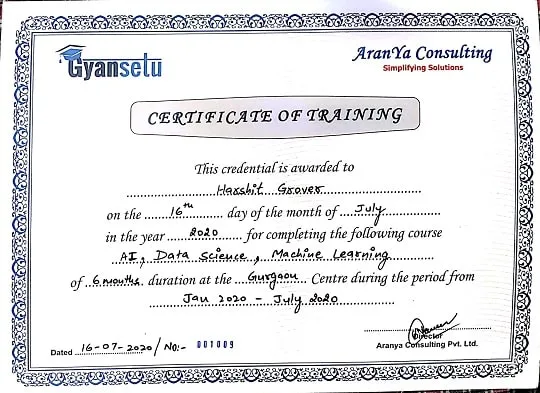
Reviews
Placement

Shubam
Placed In:

Genpact
Placed On – April 21 , 2018Review:
Support team really helped very well on the Project. Had Great Support and experience and also made my professional Up-gradation soon.

Gautami
Placed In:

Evalueserve
Placed On – August 09 , 2017Review:
Gyansetu is giving Lifetime service also clears any doubts. I am really happy and i will suggest others too for best Experience.

Gagan
Placed In:

Ai Touch
Placed On – June 27 , 2019Review:
The course was really useful The instructor was explaining the practicals very clearly. Also clearing the doubts very quickly.
Enroll Now
Structure your learning and get a certificate to prove it.
Deep Learning and Artificial Intelligence Training Course in Gurgaon Features
Frequently Asked Questions
- What type of technical questions are asked in interviews?
- What are their expectations?
- How should you prepare?
We have seen getting a relevant interview call is not a big challenge in your case. Gyansetu Training Institute's placement team consistently works on industry collaboration and associations which help our students to find their dream job right after the completion of Artificial Intelligence training in Gurgaon. We help you prepare your CV by adding relevant projects and skills once 80% of the course is completed. Our placement team will update your profile on Job Portals, this increases relevant interview calls by 5x.
Interview selection depends on your knowledge and learning. As per the past trend, the initial 5 interviews is a learning experience of
Our faculty team will constantly support you during interviews. Usually, students get job after appearing in 6-7 interviews.
- What type of technical questions are asked in interviews?
- What are their expectations?
- How should you prepare?
We have seen getting a technical interview call is a challenge at times. Most of the time you receive sales job calls/ backend job calls/ BPO job calls. No Worries!! Our Placement team will prepare your CV in such a way that you will have a good number of technical interview calls. We will provide you interview preparation sessions and make you job ready. Our placement team consistently works on industry collaboration and associations which help our students to find their dream job right after the completion of training. Our placement team will update your profile on Job Portals, this increases relevant interview call by 3x
Interview selection depends on your knowledge and learning. As per the past trend, the initial 8 interviews is a learning experience of
Our faculty team will constantly support you during interviews. Usually, students get job after appearing in 6-7 interviews.
- What type of technical questions are asked in interviews?
- What are their expectations?
- How should you prepare?
We have seen getting a technical interview call is hardly possible. Gyansetu provides internship opportunities to the non-working students so they have some industry exposure before they appear in interviews. Internship experience adds a lot of value to your CV and our placement team will prepare your CV in such a way that you will have a good number of interview calls. We will provide you interview preparation sessions and make you job ready. Our placement team consistently works on industry collaboration and associations which help our students to find their dream job right after the completion of training and we will update your profile on Job Portals, this increases relevant interview call by 3x
Interview selection depends on your knowledge and learning. As per the past trend, initial 8 interviews is a learning experience of
Our faculty team will constantly support you during interviews. Usually, students get job after appearing in 6-7 interviews.
Yes, a one-to-one faculty discussion and demo session will be provided before admission. We understand the importance of trust between you and the trainer. We will be happy if you clear all your queries before you start classes with us.
We understand the importance of every session. Sessions recording will be shared with you and in case of any query, faculty will give you extra time to answer your queries.
Yes, we understand that self-learning is most crucial and for the same we provide students with PPTs, PDFs, class recordings, lab sessions, etc, so that a student can get a good handle of these topics.
We provide an option to retake the Deep learning/AI course in Gurgaon within 3 months from the completion of your course, so that you get more time to learn the concepts and do the best in your interviews.
We believe in the concept that having less students is the best way to pay attention to each student individually and for the same our batch size varies between 5-10 people.
Yes, we have batches available on weekends. We understand many students are in jobs and it's difficult to take time for training on weekdays. Batch timings need to be checked with our counsellors.
Yes, we have batches available on weekdays but in limited time slots. Since most of our trainers are working, so either the batches are available in morning hours or in the evening hours. You need to contact our counsellors to know more on this.
The total duration of the Deep Learning/Artificial Intelligence course is 100 hours (50 hours of live instructor-led training and 50 hours of self-paced learning).
You don’t need to pay anyone for software installation, our faculties will provide you all the required softwares and will assist you in the complete installation process.
Our faculties will help you in resolving your queries during and after the course.
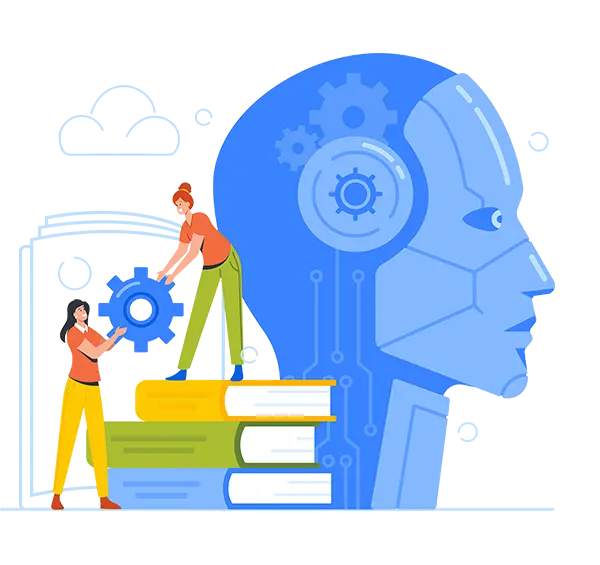



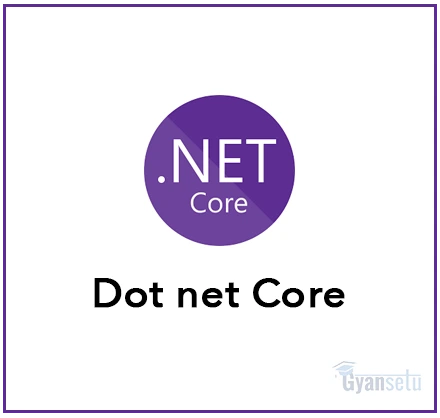
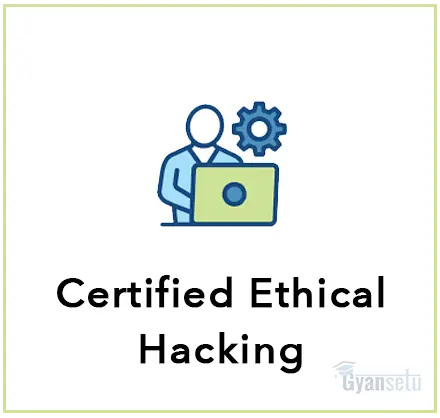
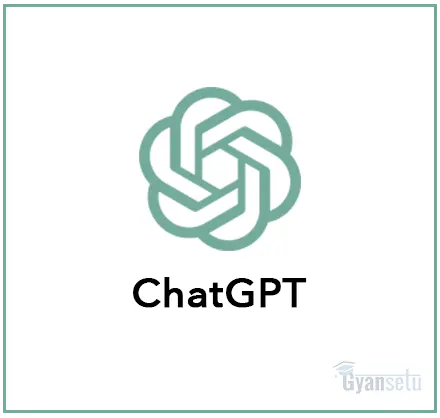
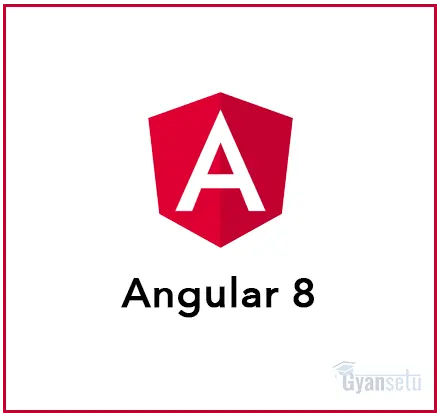
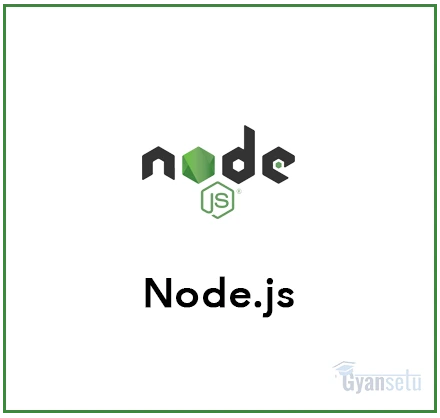
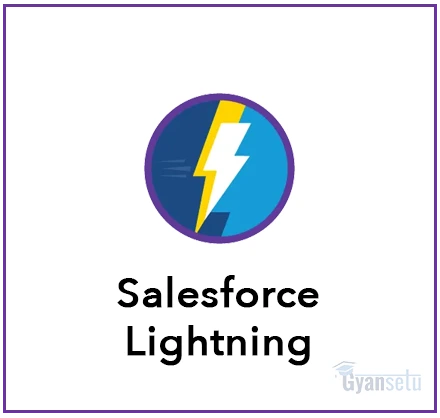
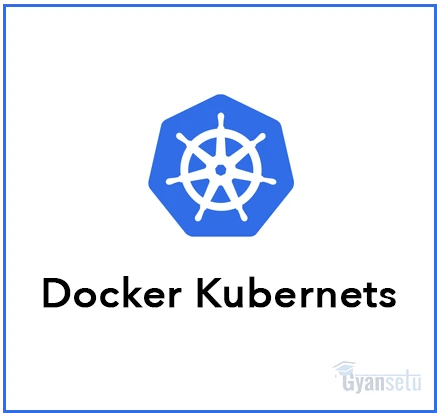
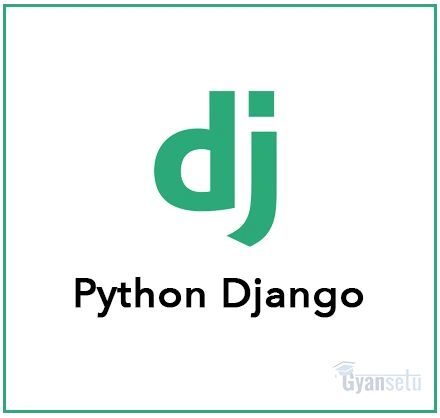
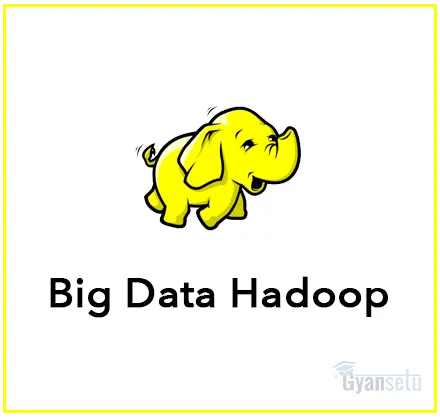
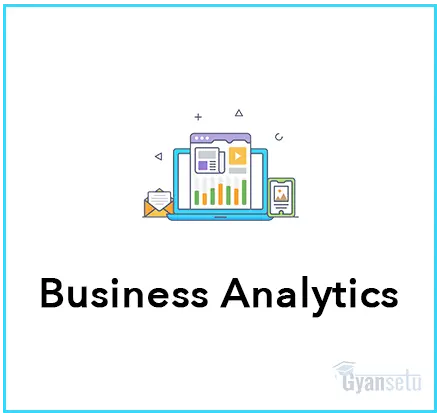
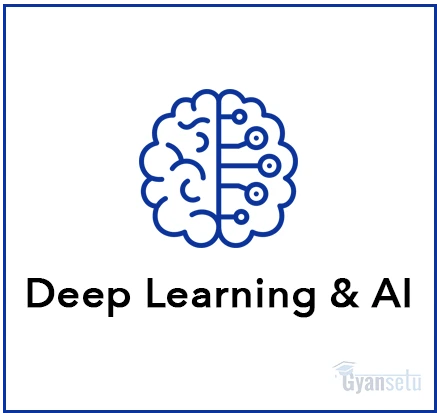
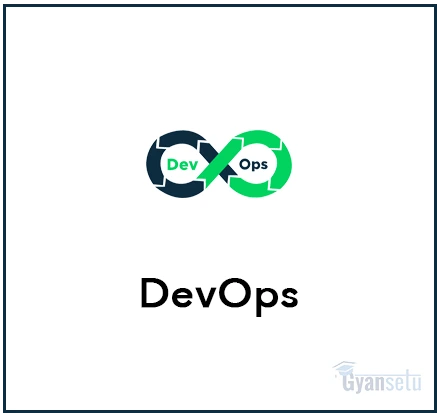
.webp)